- Home
- Blog
- Social Media
- The Paid Social Tune Up: Your Ultimate 10-Step Social Media Ad Audit to Maximize Performance
The Paid Social Tune Up: Your Ultimate 10-Step Social Media Ad Audit to Maximize Performance
Table of Contents
- When should you conduct a social media ad audit?
- Benefits of a social media ad audit
- How to do a social media ad audit
- 1. Review ad performance
- 2. Check the analytics infrastructure
- 3. Evaluate the campaign and ad set structure
- 4. Assess audience targeting and exclusions
- 5. Evaluate ad creatives
- 6. Analyze ad placement
- 7. Identify strengths and weaknesses
- 8. Conduct a landing page review
- 9. Evaluate competitors
- 10. Optimize ads for better results
- Get the free social media ad audit template
- Best social media audit tools
Conducting paid social media audits is just as important as conducting organic social media audits. Audits are one of the first steps to improving social media ad performance. So the fact that you’re here means you’re already on the right track!
A social media ad audit informs and refines your social media strategy based on a campaign’s strengths and improvement areas. Let’s explore how paid social audits work and how you can perform one.
If you like this post and want more marketing tips, subscribe to Revenue Weekly for advice from our marketing experts!
- When should you conduct a social media ad audit
- Benefits of a social media ad audit
- How to do a social media ad audit
- Free social media ad audit template
- Best social media audit tools
What is a social media ad audit?
A social media ad audit is a comprehensive evaluation of your social media advertising campaigns to assess their effectiveness and identify areas for improvement.
During the audit, your company will examine audience engagement, key performance indicators (KPIs), and overall strategy to understand which aspects are working and which are not. Based on this information, you will optimize your campaign for better results.
Some of the information you’ll get out of a social media ad audit includes:
- Your most effective platforms
- Your audience’s demographics
- Your target audience’s main interests on each platform
- How each platform contributes to your goals
- What helps grow your audience versus what doesn’t
- Which new ideas could contribute to ad success
- What to focus your attention on next
When should you conduct a social media ad audit?
You can choose when to perform a social media ad audit based on the campaign’s success and activity. For instance, you could do an audit every six months when your campaign has demonstrated long-term social media success.
If you are receiving many customer complaints about an ad or seeing lack of interest, consider running the audit more frequently. Otherwise, you could track progress with quarterly audits if the ad is not very successful or unsuccessful.
Benefits of a social media ad audit
An effective paid social media audit provides some of the following benefits:
- Improved return on investment (ROI): Conducting an ad audit allows you to improve ad performance, ultimately increasing your ROI.
- Better understanding of successful campaigns: A social media ad audit allows you to identify the aspects of a campaign that deliver results and those that need improvement.
- Optimized ad creatives: You can evaluate whether ad copy and visuals are engaging and effective.
- Improved targeting: The ad audit helps you see whether your ads are reaching the most relevant audiences.
- Better competitor tracking: Audits allow the chance to analyze your competitors’ ad campaigns and strategies and identify opportunities for differentiation.
How to do a social media ad audit
Complete your social media ad audit with these 10 easy steps.
| 10-step paid social media audit | |
| Steps | How to implement |
| 1. Review ad performance | Analyze key metrics like clicks, impressions, conversions, and reach to establish what’s working and what’s not on each platform. |
| 2. Check the analytics infrastructure | Use analytics tools to identify any back-end discrepancies and errors. Troubleshoot these issues to ensure everything works smoothly. |
| 3. Evaluate the campaign and ad set structure | Check whether your campaign has a structure that maximizes automatic optimization. |
| 4. Assess audience targeting and exclusions | Ensure that you are targeting the right audience regarding demographics, behavior, and interests. |
| 5. Evaluate ad creatives | Examine the quality and performance of ad copy, the creative approach, and visuals. Evaluate how well you are catering to the audience’s diverse preferences. |
| 6. Analyze ad placement | Check whether your ad placement is effective across social media platforms and formats. |
| 7. Identify strengths and weaknesses | Look at your top-performing and underperforming ad campaigns. Consider missed opportunities and which aspects got the most engagement compared to other areas. |
| 8. Conduct a landing page review | Review the relevancy and quality of your ad destination page. |
| 9. Evaluate competitors | Conduct a competitive analysis by comparing your social media ads to multiple competitors’ ads across social media channels. |
| 10. Optimize ads for better results | Use data-driven insights and results from your analyses to establish clear action items and optimize your ad campaigns. |
1. Review ad performance
What works for target audiences on different platforms varies. Assess what’s working and what’s not on each social media channel. Analyze key metrics like:
- Clicks
- Impressions
- Reach
- Conversions
- Cost per acquisition (CPA)
- Return on ad spend (ROAS)
Consider what a top-performing ad looks like. What type of content, such as photos or videos, does your target audience enjoy best? What style of content, such as polished or candid, brings in the highest engagement rates?
This is also a great time to identify opportunities from new social media platforms. Find out how much of your target audience is using a new platform and optimize your social media ads to display on these channels before your competitors.
2. Check the analytics infrastructure
The analytics infrastructure of a social media ad account is the system that collects and analyzes ad performance data. Tools like the Google Tag Manager and Meta Events Manager help with viewing pixel changes, errors, and back-end discrepancies.
Troubleshoot your existing property by debugging errors. Once you finish the troubleshooting process, evaluate any gaps in event tracking. Brainstorm ways to fill those gaps.
3. Evaluate the campaign and ad set structure
Your ad set structure should lead the right audiences smoothly through the customer journey. Check whether the campaign objectives align with business goals.
Aside from this, you should also check if you grouped the campaigns into specific touchpoints in the customer journey.
A well-structured ad set reduces the chances of audience overlap within or between platforms. Overlapping causes users to receive repetitive or irrelevant messages, leading to a poor customer experience and decreased engagement.
You can also check whether your campaign has a structure that maximizes automatic optimization. This ensures the campaign is efficient and minimizes redundancy for easier optimization and cleaner test results.
4. Assess audience targeting and exclusions
Are you targeting the right audience in terms of demographics, behavior, and interests to reach the right audience? To ensure you’re targeting the correct demographics, understand which networks resonate most with specific age groups and regions.
Check whether your intended audience is on the platform you’re advertising on. You can start by evaluating overall channel metrics.
For example, consider that 643 million active Facebook users are ages 25-34. If your primary audience is users between the ages of 27 and 35, you’ll probably look to advertise on Facebook because it includes your preferred age range.
You’ll then want to monitor your particular audience to see how many use Facebook compared to other social media platforms.
Creating a buyer persona is a great way to ensure you always target the right audience. A buyer persona is an accurate summary of your target audience, including their favorite platforms, interests, and preferred content types.
When creating a new ad, refer to your ideal customer profile to ensure it targets the appropriate people.
5. Evaluate ad creatives
Examine the quality and performance of ad copy, the creative approach, and visuals. Your audience will likely have different tastes, so find a way to cater to them all. Consider these options when reviewing the existing ad creatives:
- Closed captions (CC): While sound is becoming more important with platforms like TikTok, some users may still prefer to mute their videos. Incorporating closed captions can make your ad content more inclusive and accessible.
- The five-second rule: Consider catering to shorter attention spans. The best way to do this is to engage your audience in the first five seconds of your video ad.
- Creative style and formats: Conduct a split test on different creative styles and formats to see which performs work well with your audience.
- Matching the audience: Your ad content and creatives should reflect your varied audience. Whether it includes different family setups, ethnicities, sizes, or ages, incorporate aspects that allow users to see themselves in your creatives.
- Trending sounds and styles: Depending on audience demographics, use popular sounds and styles that appeal to your audience. Doing so can make your content feel less like an ad.
- Authenticity: While you want to be trendy, you also want to ensure the ad creatives still reflect your brand. This is what will make your ads authentic. So, have fun with it, but still keep your company values in mind when crafting ads.
- Text placement: Despite having similar dimensions, you may want to display content on some channels differently than others. For example, you should center text on paid ads on TikTok, while Instagram Reel ads shouldn’t have text in the bottom third of the video or image. The images below demonstrate the areas where your video ads should not contain in-video text on Instagram and TikTok.
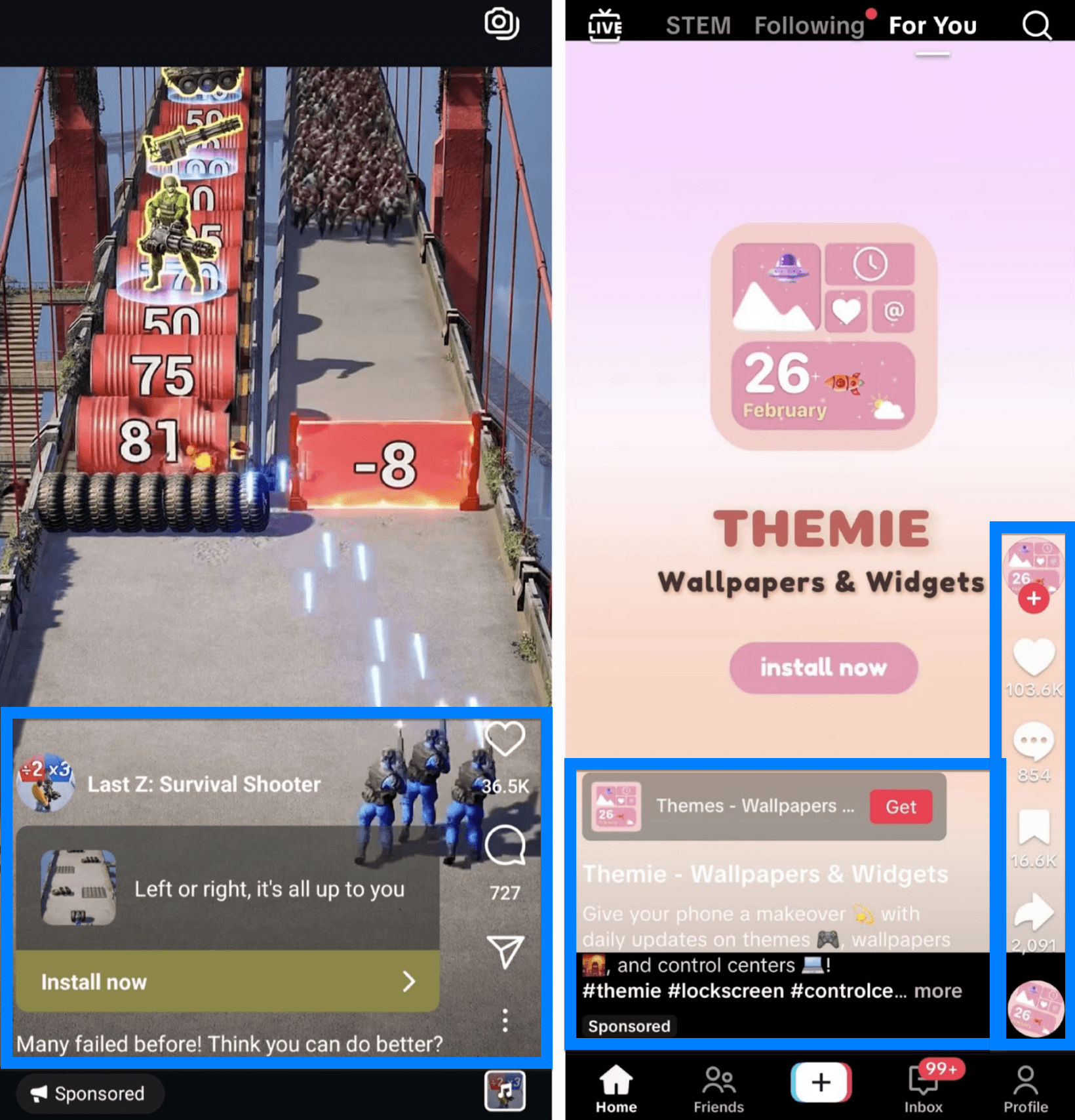
6. Analyze ad placement
When analyzing ad placement, ask yourself — Is the ad placement effective across different social media platforms and ad formats? Most platforms have a variety of ad placement options.
For instance, Facebook has newsfeed ads, Marketplace ads, and in-stream video ads, while TikTok allows for in-feed ads, branded content, and branded hashtag challenges.
Evaluate which ad formats and placements are performing well and which areas are not getting enough attention.
Find out whether the lack of activity is due to your specific ad, audience targeting, or the placement option itself losing popularity. Based on this data, you could choose a different option or optimize your ad format for that placement area.
7. Identify strengths and weaknesses
After all your other assessments during this audit, establish your strengths and improvement areas.
Look at your top-performing content and consider which aspects got the most engagement compared to areas that didn’t. Then, analyze the underperforming ads for missed opportunities. Some common issues to look out for include:
- Format mismatch: Certain formats may not perform well on particular platforms. For example, a text-heavy ad may perform more poorly on Instagram than on Facebook.
- Timing issues: Perhaps you marketed a product or service due to a new trend, but missed your timing to gain momentum.
- Missing call-to-actions (CTAs): Does the main caption invite the audience to do something? Or is it missing a link?
- Weak visuals: If the creative lacks engagement, feels off-brand, or is hard to read or cluttered, it could prevent users from resonating with the message.
8. Conduct a landing page review
Your ad destination pages are an important part of your social media ad audit. The relevancy and quality of your landing page determine whether the target audience takes action in that final stage.
Does the landing page’s creative style and call to action match that of the ad creative? Does it align with the user’s current stage in the customer journey? Make sure to tailor your landing pages for a more relevant user experience.
You should also send users to a high-quality landing page. The page should have an action-oriented design, accessible content, and appropriate page speed to enhance the success of your social media ad.
9. Evaluate competitors
Compare your social media ad performance to your competitors’ ads side-by-side. Consider engagement, growth, and content performance.
You can conduct the competitive analysis by comparing your social media ads to multiple competitors’ ads, one channel at a time. Otherwise, you could compare your ads to one competitor’s ads across various channels.
A competitive analysis will help you understand aspects your target audience might prefer in competitor ads, and areas of your advertisements that users enjoy over competitor ads.
This information creates opportunities to adapt ideas to your business and maintain differentiation from competitors.
10. Optimize ads for better results
Use data-driven insights and results from your analyses to optimize your ad campaigns. Doing so will allow you to improve creatives, targeting, and budget allocation. To start, list out your answers to these questions:
- What social media content types and platforms are driving the most results? How can you apply that success to new ads?
- Is your content resonating with the expected audience demographics?
- Which low-performing ads can you tweak or pause in the meantime?
- Are you neglecting certain social media platforms? Are there any new platforms you should be using or low-performing platforms you should avoid advertising on?
- How can you align the content with business and social media goals?
By the end of your social media audit, you should be able to outline clear action items and assign teams or individuals to work on these areas.
🎥Video: Social media audit guide for beginners
Free social media ad audit template
Are you ready to begin your social media ad audit? To make the steps easier to follow, we’ve created a checklist of all 10 steps.
A paid social media audit template will help streamline the auditing process, create a more structured framework as you analyze social data, and improve audit consistency. It also provides a holistic picture of social media ad performance.
Free Template
Find Wins Sooner
Download our free social media ad audit template find opportunities for your campaigns sooner!
Get My Free TemplateThe best social media audit tools
Social media audit tools will improve the efficiency and accuracy of your ad audits. Complement your template with valuable tracking tools like:
Google Analytics
While you can use Google Analytics for website analysis, you can also use it to track the effectiveness of social media campaigns. Consider integrating your Google data into your audit to see how your social media advertising strategy aligns with your search presence.
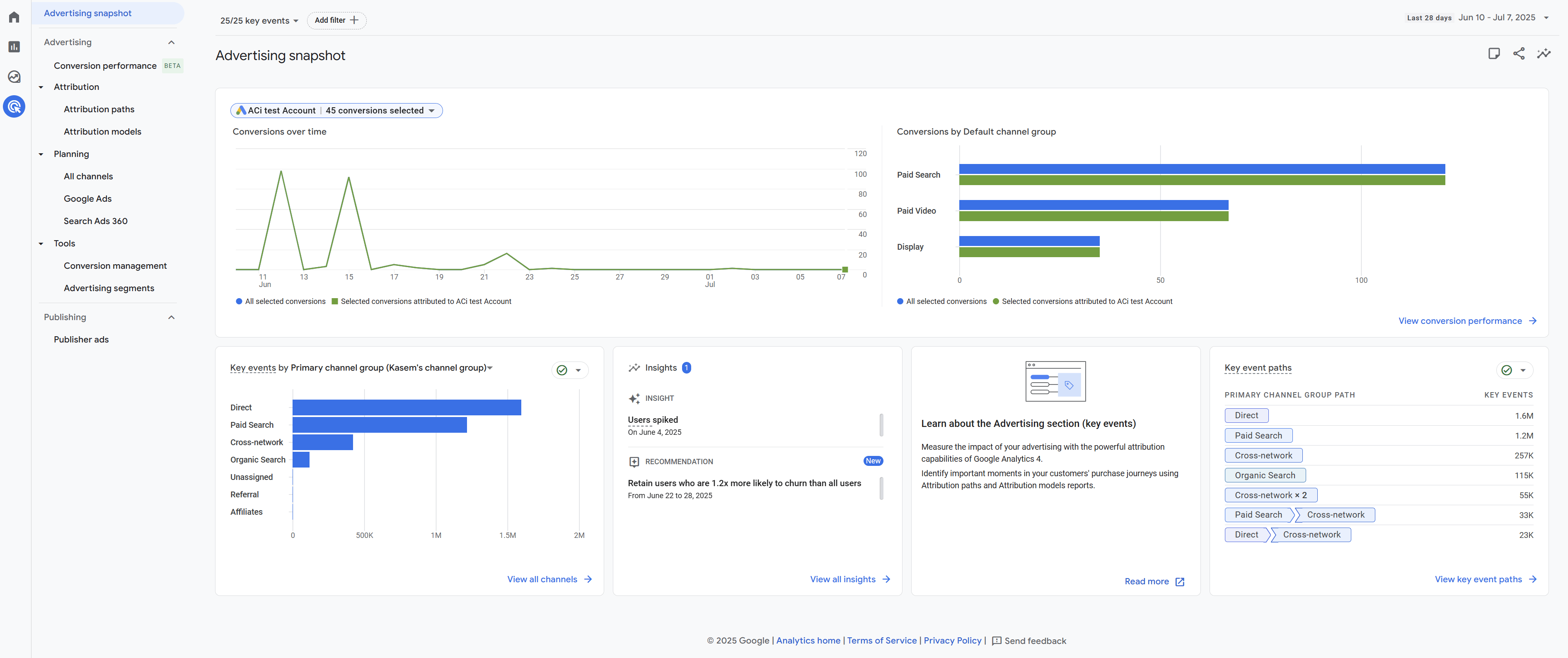
Nutshell
Nutshell is a customer relationship management (CRM) platform that gathers and analyzes data to improve sales and marketing initiatives. You’ll be able to gain insights about how users interact with paid ads, improve audience targeting, and personalize the customer journey.
You can integrate Nutshell with your social data to monitor campaigns and touchpoints that drive business results. This data will allow you to demonstrate the value of social media ad campaigns to stakeholders.
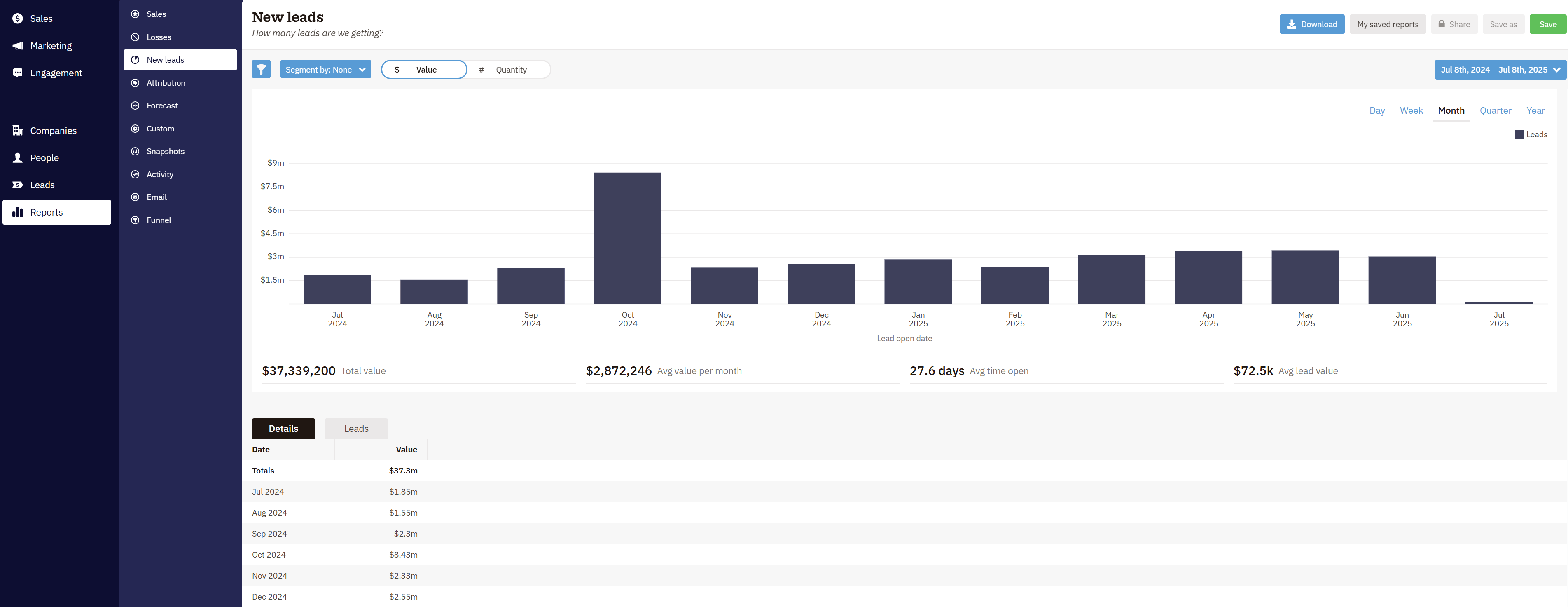
TeamAI
If you want to get creative with new ad strategies and ideas, consider using TeamAI. TeamAI is a multi-LLM (large learning model) platform that provides users with custom AI assistance based on their specific needs and preferences.
The platform gives your organization access to AI models in a centralized platform for easier collaboration and business integration. This way, your team has a shared space for generating, tailoring, and sharing ad campaign improvement ideas.
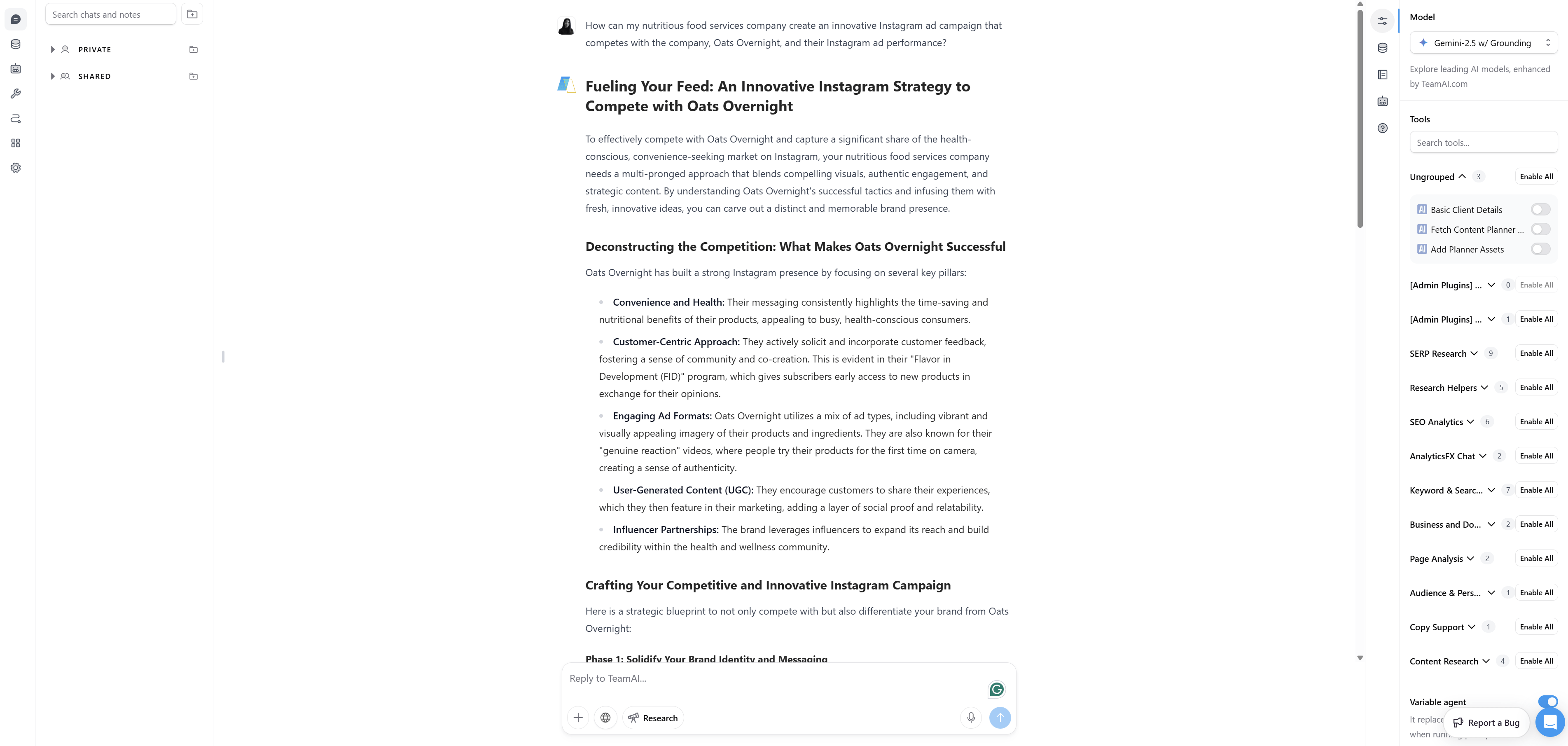
Streamline your paid social media audit today
A social media ad audit helps you gain better insight into your marketing and advertising efforts. Through the information you gain, you can improve audience targeting, engagement, and ad performance.
If you already have your hands full, we’re more than happy to see how we can assist. Browse our social media marketing services or contact us for tailored assistance with your audit!
-
 Thaakirah Abrahams is a Marketing Editor at WebFX, where she leverages her years of experience to craft compelling website content. With a background in Journalism and Media studies and certifications in inbound marketing, she holds a keen eye for detail and a talent for breaking down complex topics for numerous sectors, including the legal and finance industries. When she’s not writing or optimizing content, Thaakirah enjoys the simple pleasures of reading in her garden and spending quality time with her family during game nights.
Thaakirah Abrahams is a Marketing Editor at WebFX, where she leverages her years of experience to craft compelling website content. With a background in Journalism and Media studies and certifications in inbound marketing, she holds a keen eye for detail and a talent for breaking down complex topics for numerous sectors, including the legal and finance industries. When she’s not writing or optimizing content, Thaakirah enjoys the simple pleasures of reading in her garden and spending quality time with her family during game nights. -

WebFX is a full-service marketing agency with 1,100+ client reviews and a 4.9-star rating on Clutch! Find out how our expert team and revenue-accelerating tech can drive results for you! Learn more
Twitter and Facebook Status Generator
Finding engaging social media content for your business can be difficult. Use our tool to quickly find ideas and post directly to your page.
Give Me an Idea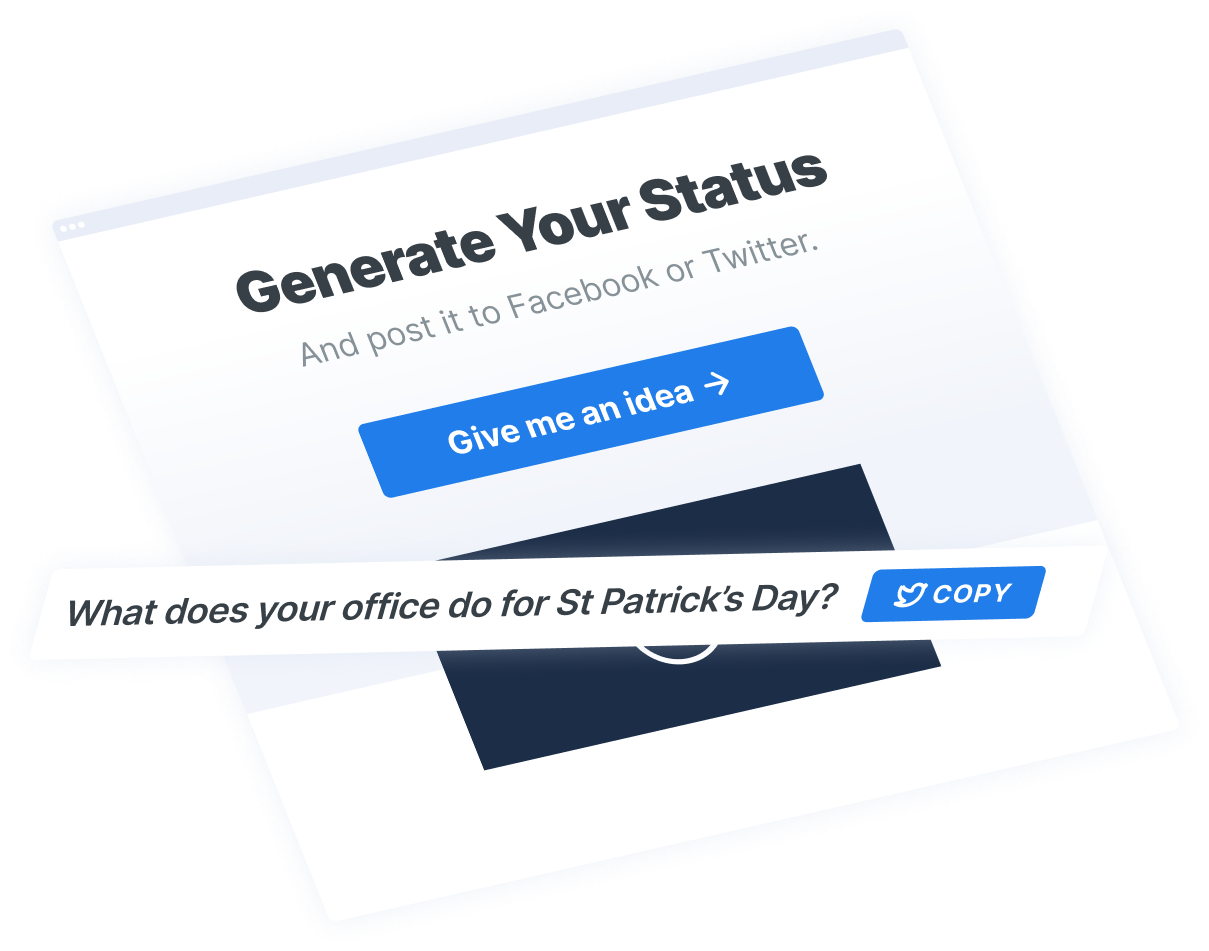
Table of Contents
- When should you conduct a social media ad audit?
- Benefits of a social media ad audit
- How to do a social media ad audit
- 1. Review ad performance
- 2. Check the analytics infrastructure
- 3. Evaluate the campaign and ad set structure
- 4. Assess audience targeting and exclusions
- 5. Evaluate ad creatives
- 6. Analyze ad placement
- 7. Identify strengths and weaknesses
- 8. Conduct a landing page review
- 9. Evaluate competitors
- 10. Optimize ads for better results
- Get the free social media ad audit template
- Best social media audit tools

Social Media Success Story

Proven Marketing Strategies
Twitter and Facebook Status Generator
Finding engaging social media content for your business can be difficult. Use our tool to quickly find ideas and post directly to your page.
Give Me an Idea
 WebFX Editor
WebFX Editor
What to read next





